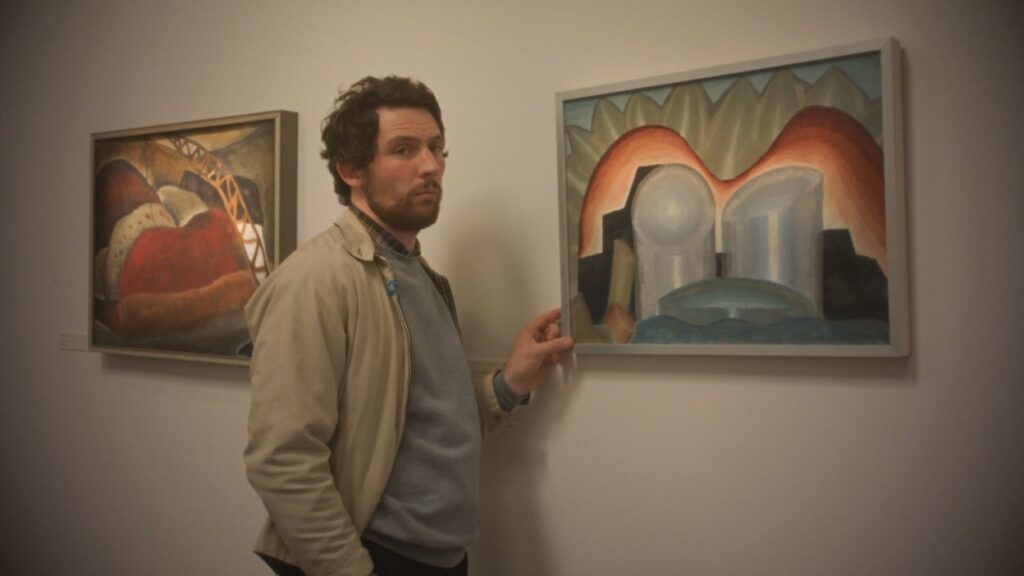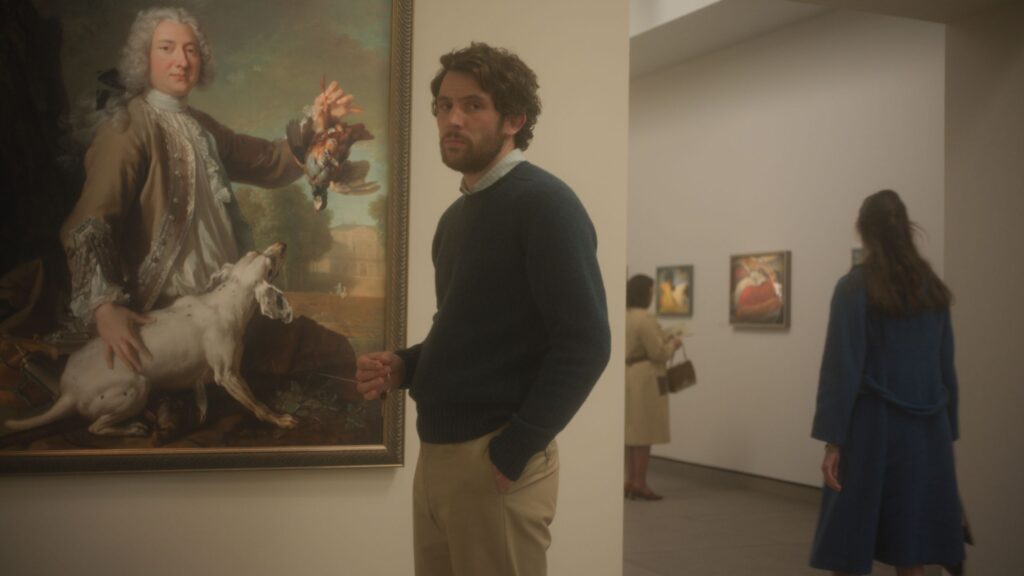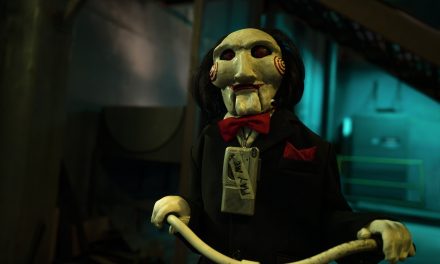On the surface, James Blaine “JB” Mooney (Josh O’Connor) is a suburban dad from the outside. He looks after his children and enjoys visiting museums with his wife, Terri (Alana Haim). But there is more to JB than meets the eye, he is a master thief plotting his biggest heist yet, in The Mastermind.
Kelly Reichardt’s glacial 1970s heist drama is an acquired taste. Some will appreciate the slow unfolding of crime, while others will beg for something to happen (not even something significant, just something). Scenes unfold in long, slow takes with minimal cuts, painstakingly concentrating on the details.
About “The Mastermind”
The Mastermind opens with JB casing out his local art gallery in Massachusetts, he painstakingly takes in all the details, including the sleeping guards. He sneaks around the other attendees, with them not noticing when a small artefact slides into his pocket. Only upon his exit is it revealed that they were his wife and children, who appear unaware of his skills. This opening scene is highly stylized, with a pulsing jazz score, but it’s the best the film gets.
JB wants to pocket more than just small artefacts, he has his eyes on four Modernist paintings by Arthur Dove. He puts together a small team and a plan, but like all good heist films, something goes very wrong. He outlines the plan with Guy (Eli Gelb) and Larry (Cole Doman), who steal a getaway car and bring Ronnie (Javion Allen) onto the job. JB is a man who looks like he has his life together, but it becomes clear how unplanned his plan actually is.
The robbery scene is thrilling but all too short. The Mastermind soon reveals itself as an anti-heist film that is more concerned about the aftermath than the event. Reichardt spends time deconstructing the genre, following how JB’s life unravels after the heist. There are no car chases, no gun fights, not even any fast-paced criminal activities. The story focuses more on the introverted mind behind the crime, which will no doubt frustrate those looking for the Josh O’Connor heist thriller which exists somewhere in this movie.

Josh O’Connor And Cast Wow In Anti-Heist Movie
Despite the issues with The Mastermind, O’Connor is dazzling as blue-collar JB. He gives a layered performance in a role with minimal dialogue, creating a fully realized character. The actor’s soulful eyes can say so much with almost no words, ideal for a film about what people do and not what they say. The actor also has the ideal look for the 1972 setting, wearing a range of earth-toned outfits throughout the film alongside his curly mop of hair. This role uses the same skills O’Connor showcased in La Chimera, mainly his ability to look soulful when looking at art pieces.
Alana Haim (of the band Haim) also proves herself an actress worth watching. Her small role, which mainly comes over the phone, is the heart of The Mastermind. She perfectly embodies the tired frustration of a wife trying her best to handle her husband’s well-meaning but terrible plans. Real-life twins Sterling and Jasper Thompson scene-steal as JB and Terri’s chaotic children, adding much-needed energy to the film.
They are joined by a brilliant ensemble of character actors who know how to work with small supporting roles. Hope Davis and Bill Camp play JB’s judgmental parents, snarking at him over the dinner table. John Magaro and Gaby Hoffman play exasperated friends, not willing to play along with JB’s latest idea.

The issue with The Mastermind is that scenes play out in their full detail and sometimes carry on for ten minutes after other directors would have yelled cut. These scenes look beautiful and create a unique rhythm, but have no narrative payoff. There is a sense of always waiting for something else to happen, for added meaning, for a payoff. Yet, this is not a film of big twists and gotcha moments, which won’t be for everyone.
The Mastermind Asks The Audience To Focus On The Small Momenta
Perhaps The Mastermind suffers from style over substance. Cinematographer Christopher Blauvelt brings warm tones to the film, giving it an authentic 1970s aesthetic. Costumer Amy Roth also nails the era, dressing anyone in appropriate brown corduroy and mustard yellow sweaters. Rob Mazurek’s jazz score is overpowering, especially to those who are not fans of the musical genre. The John Coltrane-inspired soundtrack, with heavy trumpets and percussion, often contradicts the gentle pacing of the visuals, arguing with each other.
There are traces of something more political or meaningful at play in the film’s small moment, almost like James is a side character in another film. News reels play in the background of scenes throughout, talking about anti-war protests, the Vietnam War spreading to Cambodia, and Nixon’s presidency. The social commentary is shallow, leaving social unrest and Civil Rights protests to TV news. Perhaps this is to represent JB’s uninterest as a white man from a middle-class family, or maybe because The Mastermind is not that film.
The Mastermind is a masterclass in the director’s own unique philosophical take on life. Reichard is always going to focus on the small moments in life, even during the middle of a criminal act. It’s an acquired taste of a film, a sublime exploration of one man exploding his life in the hopes of finding the American dream to some, or like watching paint dry for another.
Even the biggest Reichard-head may be frustrated by the last scene, which threatens something big but cuts to black before we can get there. The Mastermind is a small film about a big day for an average man, which begs the audience to observe the small details and ignore the big picture and overachieving plot.

![‘The Mastermind’: Glacial Slow Anti-Heist Movie From Kelly Reichardt [REVIEW]](http://18.211.146.234/wp-content/uploads/2025/10/project_20251019_2155285-01-1280x640.png)

![Black Adam – DC’s Re-Introduction Does The Job [Review]](http://18.211.146.234/wp-content/uploads/2022/10/286026868_794170888579417_4784078065926706575_n-440x264.png)

![‘Reverse The Curse’ – The Red Sox (And His Son) Keep David Duchovny Alive [Trailer]](http://18.211.146.234/wp-content/uploads/2024/05/image002-4-440x264.jpg)